Search our Archives:
» Home
» History
» Holidays
» Humor
» Places
» Thought
» Opinion & Society
» Writings
» Customs
» Misc.
|
“Can Ants Say Kaddish?”
By Heidi M. Szpek, Ph.D.
Samuel Mordecai was a resident of Kolbuszowa, Poland, a small town about 50 miles east of Krakow, half-Jewish, half-Polish - until
1942, when the Jews of Kolbuszowa were liquidated at the death camp of Belzec. Yet Samuel was spared the fate of most of
Kolbuszowa’s Jewish residents, having died in 5691/1930. He had died young – ‘tender in years’, though not violently. If death had
been through violence such a detail was customary to record as in the tombstone of Samuel Margolis who had died in the October 1905
massacre in Bialystok, Poland. Margolis’ tombstone specifically noted “he was killed in the bloodshed of his world in a time of
chaos.” I had encountered Samuel Mordechai of Kolbuszowa’s tombstone in Spring of 2005, collapsed in the overgrown foliage of the
Jewish cemetery at the edge of town. As I crouched down to brush off the dried leaves which blanketed his tombstone, I made a
rubbing of his name – a way of remembering. Yet it was a hurried rubbing I made for not only did I brush away the dried leaves, but
also the myriad of big, black ants that bustled over his tombstone, over the ground upon which I stood, crawling up my pant legs.
Repeatedly, I brushed them off, yet they persisted. I rubbed and brushed and shook my legs, standing up to shake them off. Yet they
persisted. As we wandered through some worn, other overgrown, pathways of the cemetery, the ants outnumbered by a myriad the
tombstones.
Some tombstones were still erect, some tilted forwards, some backwards, some collapsed, some barely visible. And I wondered …
what had brought so many ants to this cemetery? A Snicker’s candy bar wrapper, yogurt containers, orange pop cans scattered along
the pathways suggested an answer. Clearly someone ‘visited’ yet did not tend to this cemetery. Graffiti on the concrete support for
the cemetery’s wrought-iron gates clearly indicated someone’s displeasure with this site – a swastika, the word DUPA (“ass”), and the
word KORN, with a backwards ‘R’ – trademark of the 1990s popular American rock group (Images 2 and 3). Perhaps such untended
cemeteries had become commonplace on the landscape, a meaningless remnant of a past that no longer sparked feeling or interest for
those who used it as a shortcut or picnic spot. Yet I hoped not; Kolbuszowa held a special place for me.
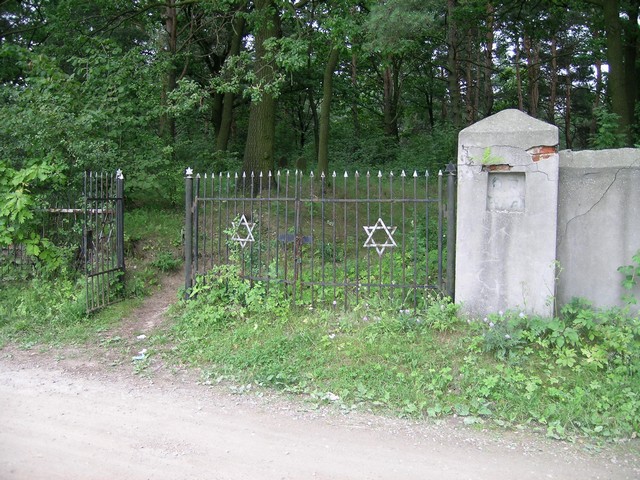
Image 2 Entrance to Kolbuszowa Cemetery, 2005
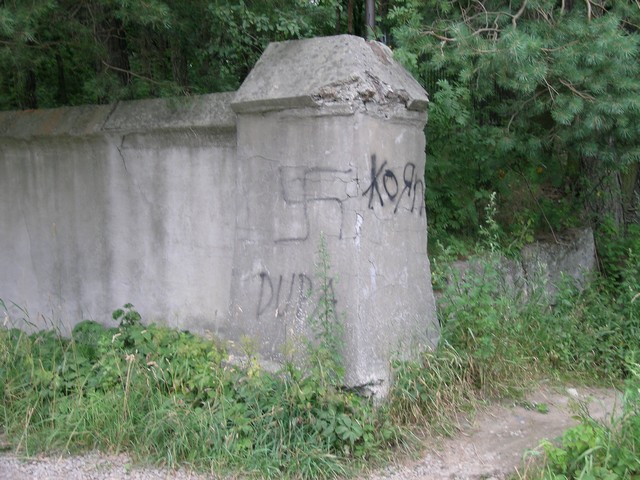
Image 3 Graffiti on cemetery wall, 2005
In the Summer of 2003, while browsing the shelves on Judaica at Barnes & Noble, a family portrait on a book cover
caught my attention. The photo was of the extended family of Norman Salsitz, birth name Naphtali Saleschutz. The title of the book
– A Jewish Boyhood in Poland: Remembering Kolbuszowa. This ‘remembering’ was Naphtali’s story, his boyhood, his family and
his shtetl – Kolbuszowa. In his recollections of life in Kolbuszowa, pre-WWII through the aftermath of the Holocaust, I
found a story with photographs that personalized his world for both me and my college students.
On travelling to Poland the following summer (2004), I vowed I would visit Kolbuszowa – a vow time constraints did not permit me
to keep. Yet in the Spring of 2005, amidst a class trip, I encountered the Saleschutz family in a most unexpected place – on a
passport at the United States Holocaust Memorial Museum in Washington D.C. Those who have visited the Museum know that on entering
one can select a passbook of a man or woman, who was in some way involved in the Holocaust. The visitor can choose to learn of the
fate of this person at the beginning or end of the tour. I selected a woman; my husband – who had joined as a chaperon, selected a
man. In the hustle to direct my students onward into the exhibit, I did not open my passport nor know of who was recorded within my
husband’s passport. At one point, while stopped at an exhibit, my husband nudged me to look at his passbook; it was the passbook of
Shulim Saleschutz, the nephew of Naphtali Saleschutz! Naphtali’s twelve year old nephew like so many of his family had not survived.
That summer I was determined to visit Naphtali’s Kolbuszowa … and we did. We walked around Kolbuszowa in search of what remained of
Naphtali’s world – his synagogue (now a museum), the market square, his school (now an apartment complex) and the cemetery. The
buildings, even the market square, did not project to me a sense of Naphtali’s past – only the side façade of the synagogue,
an image engrained in my mind from one of his photos, for a moment brought back the lost Jewish past of Kolbuszowa.
Perhaps, too, my familiarity with Kolbuszowa through the writings of Norman Salsitz (Naphtali Saleschutz) had led me to expect
more, especially to assume that this cemetery would be well-tended. A 1997 visitor to the cemetery had noted: “It wasn’t locked but
if it had been, I could have climbed the fence. The cemetery was much bigger than I expected, overgrown, uncared for, with many
headstones still standing. It had not been desecrated.” Excluding the graffiti and litter it still had not been ‘desecrated’ in
2005. Yet the reality of my assumption prompted one simple question: Whose responsibility was or is it to tend to the Jewish
cemeteries throughout Poland (and Eastern Europe for that matter)? The majority of Kolbuszowa’s Jewish population had been murdered
at Belzec; the few survivors – like Norman Salsitz, were scattered all over the globe. Who then could provide care for the cemetery
grounds? Over the next five years my research and travels would take me to the cemeteries of northeastern Poland, inspired by
Salsitz’s story, his town of Kolbuszowa, and above all by my visit to Kolbuszowa’s cemetery, the first shtetl cemetery I had
ever visited and the resulting question of responsibility this experience engendered in me.
In the Spring of 2007, traveling to 26 cemeteries in northeastern Poland, I encountered a variety of situations and potential
responses to my concern for responsibility. In Bransk, Poland, former vice-mayor, high school teacher Zbigniew Romaniuk presented
one possibility. Possessing an intense historical interest and humanitarian ethos for the former Jewish inhabitants of his town,
Zbigniew took it upon himself to collect the matzevoth (headstones) removed from the Bransk Jewish cemetery, to re-create a
‘symbolic’ cemetery on its former land and to document the remaining matzevoth.
In Siemiatycze, just inside the well-preserved brick gateway stood a memorial before which the few remaining matzevoth were
set in concrete. The remainder of the cemetery was enclosed within a chain-link fence. Void of matzevoth the foliage had
reclaimed the land. At Dabrowa Bialostocka, north of Bialystok, the community had completely built a block masonry wall around the
cemetery. Its wrought-iron gates were locked. Within, numerous matzevoth remained in their original positions, hidden amidst
the deep foliage that grew unhindered.
The rural cemeteries of Zabludow and Janow Sokolski, void of matzevoth save the lone ohel at Zabludow, remain
forlorn beside the country road (Zabludow) or surrounded by farmer’s fields (Janow Sakolski). Knyszyn’s cemetery, located on the
ridges of the ponds of a former Polish manor, was well-protected by difficulty in access and the swampy pools. Vegetation seemed the
only threat for cemeteries tucked within Poland’s pine forests, such as those in Mielnik, Narew, Michalowo, and Narewka. Yet the
urban cemeteries of Bagnowka in Bialystok, of Wasilkow and Sokolka, north of Bialystok, held special threats from vandalism and their
use as recreational areas.
Images from these cemeteries, dating from 1996 as compared to those from 2002 to 2006, revealed many changes to these cemeteries,
especially the disappearance of matzevoth. As I left at the end of May 2007, I wondered what the next years would bring.
Lack of ‘zlotys’ for renovation and upkeep was a major factor, as Janusz, our impromptu guide in Krynki, had emphasized. My efforts
over the next three years were focused on the documentation and translation of the Jewish epitaphs from Bagnowka Jewish Cemetery in
Bialystok. Yet on return to northeastern Poland in Spring of 2010, I was unexpectedly surprised at what had transpired at a number
of these cemeteries!
At Wasilkow, the local community had re-situated the three wrought-iron standards that held Stars of David, previously the
only indication that this was a Jewish cemetery. Two symbolic columns now marked the entrance to the cemetery, with a paved walkway
traversing the main path through this cemetery. (Image 5) Along the path still remained nearly 20 boulder-style matzevoth.
This walkway eventually led to a memorial that commemorated the Jews of Podlasie, who perished under German Occupation. (Image 6)
Box-like structures, each marked with a menorah, delineated the boundaries of the cemetery. This renovation with its memorial was
due to the efforts of The Society of Nowodworce. Nowodworce is a city between Bialystok and Wasilkow. All that I observed within was
in stark contrast to what I had seen three years prior. Then, the three Stars of David were about to collapse (Image 4); nearby a
tree house was erected for play; a make-shift shelter for a vagabond was in evidence; litter was scattered about, even a fragment of
a matzevah lay amidst a pile of debris. Yet that May, I should have been more inquisitive as a construction crew was onsite,
laying the pathway to what is now the back memorial wall. Clearly, construction already had been underway.
There is one detail, unbeknownst to many, incorporated into the Wasilkow memorial. At the end of the pathway, which leads to the
memorial, is a cobblestone wall. But this is no ordinary cobblestone wall. Within this wall are the pieces of matzevoth that
had been removed from the Bagnowka Cemetery in Bialystok by the Nazis and used to pave the road from Bialystok to Nowodworce. (Image
7) As late as 2006 these pieces had been photographed by local historian Tomasz Wisniewski. Now recovered from the road, where
their imprint is still visible, they have been respectfully placed in this Memorial Wall at Wasilkow.
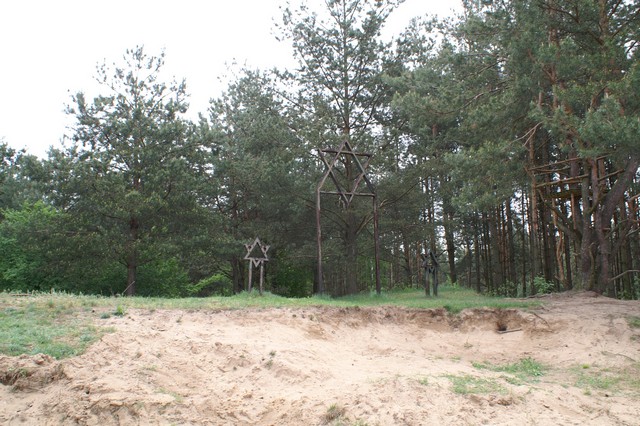
Image 4 Wasilkow Jewish Cemetery, 2007
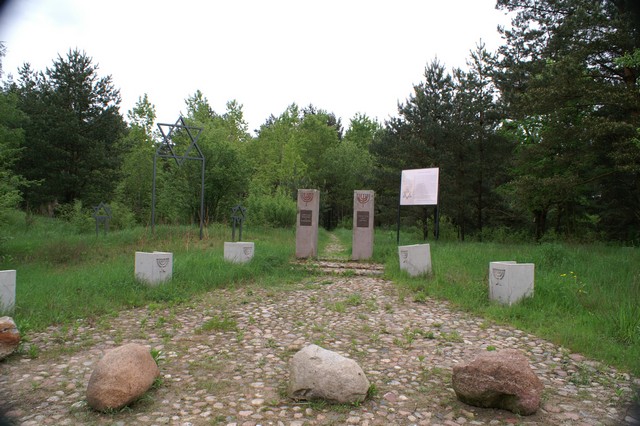
Image 5 Entrance to Wasilkow Cemetery and Memorial, 2010
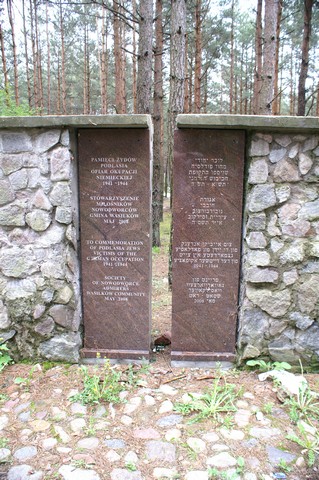
Image 6 Wasilkow Memorial, 2010
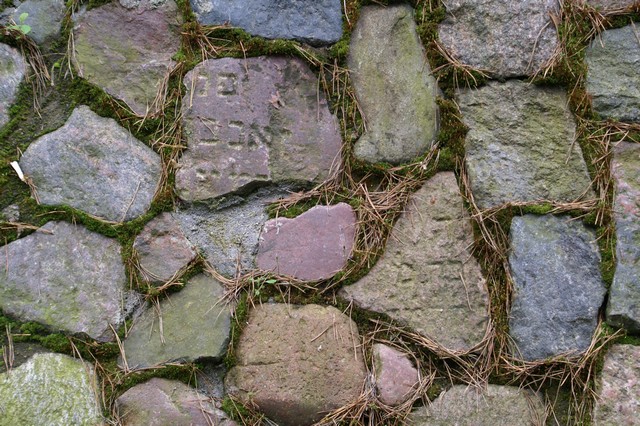
Image 7 Detail of Wasilkow Memorial Wall
At the cemeteries of Narewka, southeast of Bialystok, and Krynki, northeast of Bialystok, I also met with a pleasant
surprise. Both cemeteries had been cleaned, matzevoth uprighted, and previously illegible inscriptions were now painted to
reveal their epitaphs. Who took responsibility for Narewka? A sign indicated in Hebrew and English the answer: students from “Mekif
Het” High School, Beer Sheva, Israel, 2006-2007. (Image 8) At Krynki, a local student group, part of an educational program entitled
“Krynki Warsztaty Workshop 2009”, had worked within this cemetery. At Krynki Cemetery other changes were also in evidence. A
walkway had been cleared along the cemetery’s cobblestone wall; the wall itself was repaired. (Images 9 and 10) At the entrance to
the cemetery, a sign now stood, providing the history of this cemetery. Within the town of Krynki, informational signs also marked
the Kaukaski and Hasidic Synagogues, as well as the ruins of the Great Synagogues, initiated by the Polish organization Szukamy
Polski “In Search of Poland”.
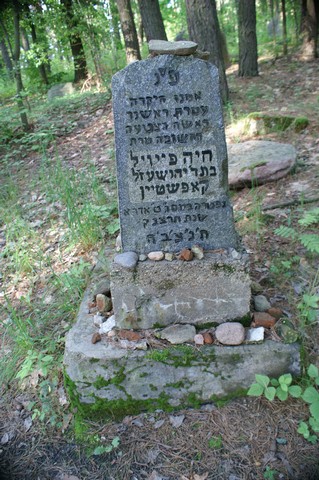
Image 8 Narewka Cemetery Epitaph Re-Painting, 2010
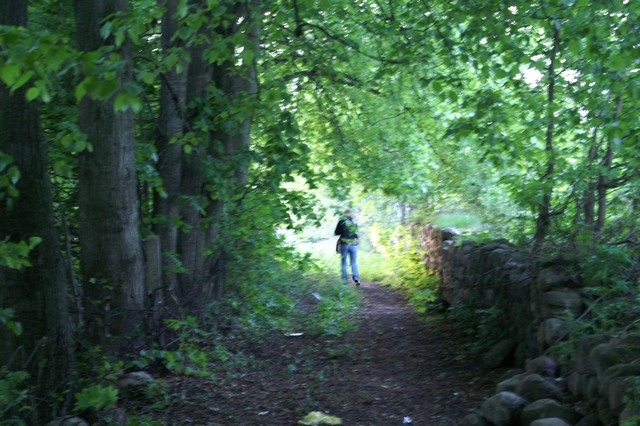
Image 9 Entrance to Krynki Cemetery, 2010
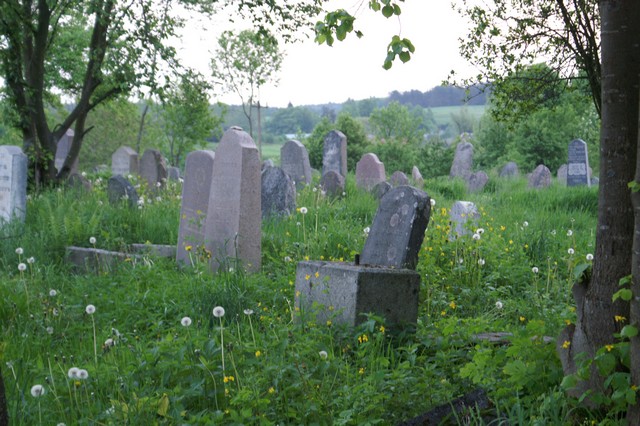
Image 10 Krynki Cemetery, 2010
A visit to the urban cemetery of Sokolka, north of Bialystok, was also met with surprise. In May of 2007, I expressed
great concern that this cemetery, surrounded on three sides by residential neighborhoods, appeared to be used for recreation – as
evidenced by pathways, litter and a recent campfire pit. Its proximity to the city streets nearly brought matzevoth roadside.
(Image 11) But changes are now underway. Much of the dense foliage is gradually being clearly along the main road. (Image 12)
Within, the cemetery bears little litter. A sign in the cleared area in Polish reminds visitors that “In this place from the
17th to 20th centuries stood a Jewish Cemetery; let this cemetery be a memorial to those Jews who once lived in
Sokolka.” It is signed simply: Sokolka 2007.
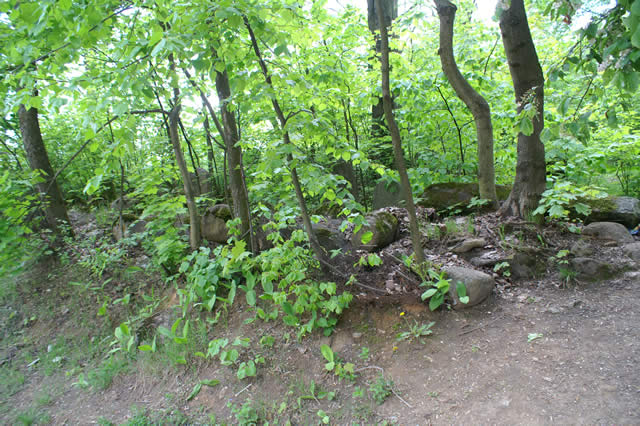
Image 11 Roadside at Sokolka Cemetery, 2007
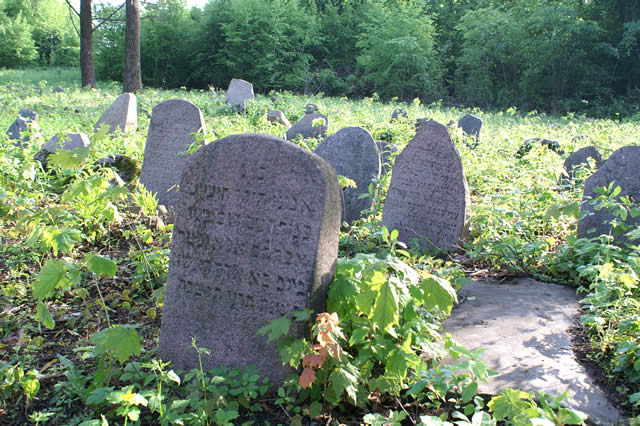
Image 12 Roadside at Sokolka Cemetery, 2010
At Bagnowka Cemetery in Bialystok, whose epitaphs I had now been translating and researching for nearly four years, I
was likewise pleasantly surprised. A beautiful new brick and wrought-iron wall now replaced the intermittent, collapsing fragments
of a wall where the Jewish Cemetery meets the Catholic Cemetery. (Image 13) The cemetery was extraordinarily clean. Documentation
is nearly complete but now signs of renovation are in evidence. One by one the sections are being cleared of their excessive
overgrowth and matzevoth are uprighted. Cleaning and clearing the cemetery is spearheaded by Centrum Edukacji
Obywatelskiej Polska-Israel, founded by the last Jew in Bialystok, Lucy Lisowska, with assistance from students at the University
of Bialystok and other local school children.
At the cemetery’s main entrance a historical sign now provides a brief history of the cemetery. (Image 14) As at Krynki, such
signs now mark Jewish and non-Jewish historical sites throughout the city – a collaborative project between the local government,
Centrum Edukacji Obywatelskiej Polska-Israel and Szukamy Polski. Yet further surprise was also in evidence. The last
matzevah from the Old Jewish Cemetery (now part of the Central Park) and pieces of matzevoth that once formed a wall
near the Town Hall have all been placed within Bagnowka Beth-Olam. The pieces will eventually be part of a memorial wall.
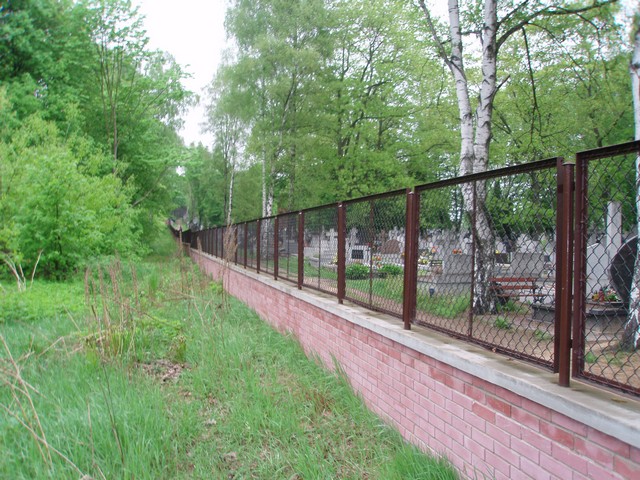
Image 13 New Wall at Bagnowka Cemetery in Bialystok, 2010
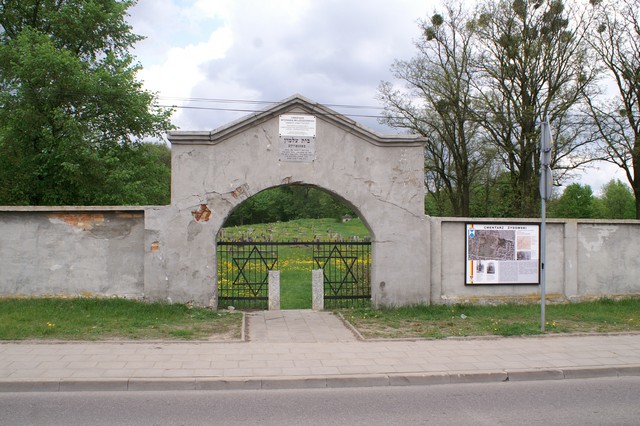
Image 14 New Sign at Bagnowka Cemetery Entrance, 2010
Finally, where once stood the parking lot of the ZUS Insurance Company, literally atop the older Jewish Cemetery on Bema
Street, now is found an extraordinary memorial. Six walkways lead to a Star of David created out of exquisite foliage, around which
are erected benches that resembles matzevoth – a place for contemplation. (Image 15) This reclamation and memorial are due to
the ceaseless efforts of the last Jew of Bialystok, Lucy Lisowska and her foundation; her ceaseless mitzvah is to care for the
Jewish sights within Bialystok and its surroundings.
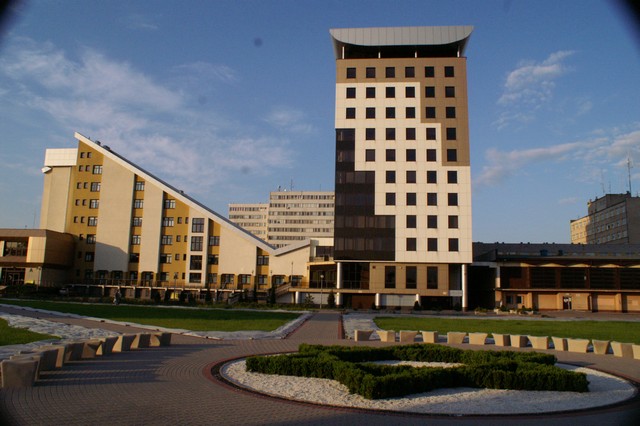
Image 15 Memorial at the site of the former Bema Street Jewish Cemetery, Bialystok, 2010
On the final day of my visit to Bagnowka Beth-Olam this Spring, I stooped to touch the face of a matzevah
whose epitaph had been effaced. The gashes in this tombstone reminded me that this cemetery will always bear signs of the assault on
Jewish material culture under Nazism and Communism. (Image 16) This spring, however, there was a refreshing vitality (and serenity)
within this cemetery for there are visible signs of both local and international care for its preservation. As I looked up to gaze
at the matzevoth, peering from atop the tall grasses that gently swayed with the evening breeze, my mind returned to
Kolbuszowa, where the ants that once assailed me prompted me to contemplate the issue of responsibility.
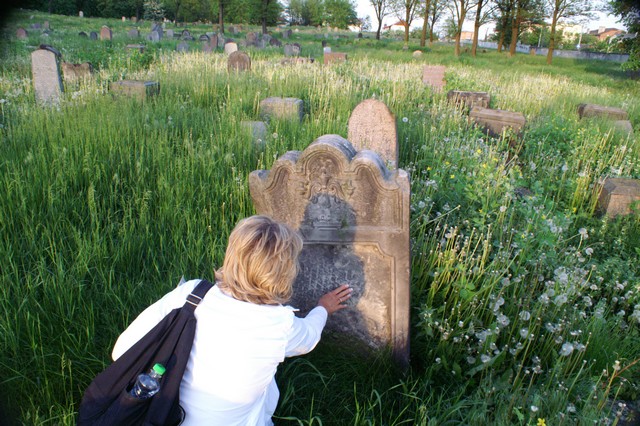
Image 16 Author in Bagnowka Cemetery, Bialystok, 2010
An answer is emerging here in northeastern Poland. Not as to who is responsible for the care of these cemeteries but
rather who is taking responsibility. Responsibility is being undertaken by the collaborative efforts of local and international
organizations. But what impressed me the most is that it is the younger generation, both in Poland and abroad, who are willingly
embracing responsibility, a responsibility that not only involves physical efforts but also a willingness to learn of a past long-
removed from their own history and to participate in preserving this legacy for posterity. The same may also be happening in
Kolbuszowa, where hopefully a future visit will remove my memory of ants. Ants cannot say Kaddish, but in that past Spring of 2005 I
encountered someone who did say Kaddish for those unwillingly absent.
In the Spring of 2005, I encountered a group more appropriate to say Kaddish, a youth group from America. As we came
upon this group visiting the Jewish cemetery at Tykocin, the Rabbi had already distributed Siddurim. Each young man and woman
had spread themselves throughout the cemetery, standing at different gravesites. (Image 17) As each young person arrived at a
gravesite at different moments, each began the Kaddish. Yet the recognizable final line of the Kaddish became
apparent, as from back to front of the cemetery, like a wave cresting to shore, three steps backwards were taken by each young person
before reciting ‘oseh shalom bim’romav, hu ya’aseh shalom aleinu v’al kol Yisrael. From back to front each young person then
returned to the Rabbi, handing the Rabbi his or her Siddur before leaving the cemetery. Kaddish was recited that July
in 2005 for those in the Tykocin cemetery and, given this Rabbi’s yearly pilgrimage to Poland, Kaddish will be recited in the
near future. Once again it is the youth who are instrumental in willingly engaging and preserving tradition.
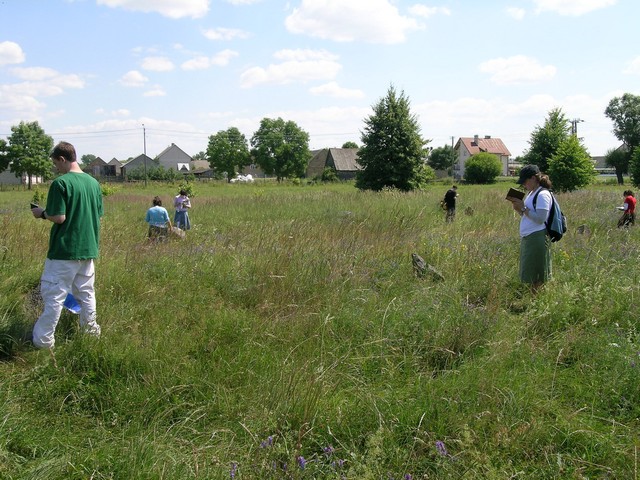
Image 17 American Youth Group says Kaddish. Tykocin Cemetery, 2005
Heidi M. Szpek, Ph.D. is a Professor of Religious Studies and Philosophy at Central Washington University (Ellensburg,
Washington), currently writing a book on the Jewish epitaphs from Bialystok, Poland, and an article on “Filial Piety in Jewish
Epitaphs”, with an intense interest in the preservation of Jewish material culture. Her most recent journal articles include: “The
Miqveh beside the Nurzec River: A Place of Remembrance” Jewish Magazine (June 2010); “With Whispers, He Spread Torah” Jewish Magazine
(April-May 2010); “Esther of Bialystok” The Jewish Magazine (February 2010); “In the Bloodshed of Their Days” Jewish Magazine
(January 2010); “Wooden Matzevoth” (with Tomasz Wisniewski) Jewish Magazine (October 2008); “He Walked Upon a Wooden Leg: Epitaphs
and Acrostic Poems on Jewish Tombstones” Legacy of the Holocaust Conference 2007 Conference Proceedings. Jagiellionian University
Press. Krakow, Poland (May 24-26, 2007), 2008; “‘And in Their Death They Were Not Separated’: Aesthetics of Jewish Tombstones.” The
International Journal of the Humanities. Vol. 5 (2007): 165-178; and “Oh Earth, Do Not Cover My Blood!”: Eastern European Jewish
Identity and the Material Culture.” The International Journal of the Humanities. Volume 4.4 (2006): 7-18.
Photograph copyrights: Heidi M. Szpek (photographed by Frank J. Idzikowski).
~~~~~~~
from the July 2010 Edition of the Jewish Magazine
|
|
Please let us know if you see something unsavory on the Google Ads and we will have them removed. Email us with the offensive URL (www.something.com)
|





|